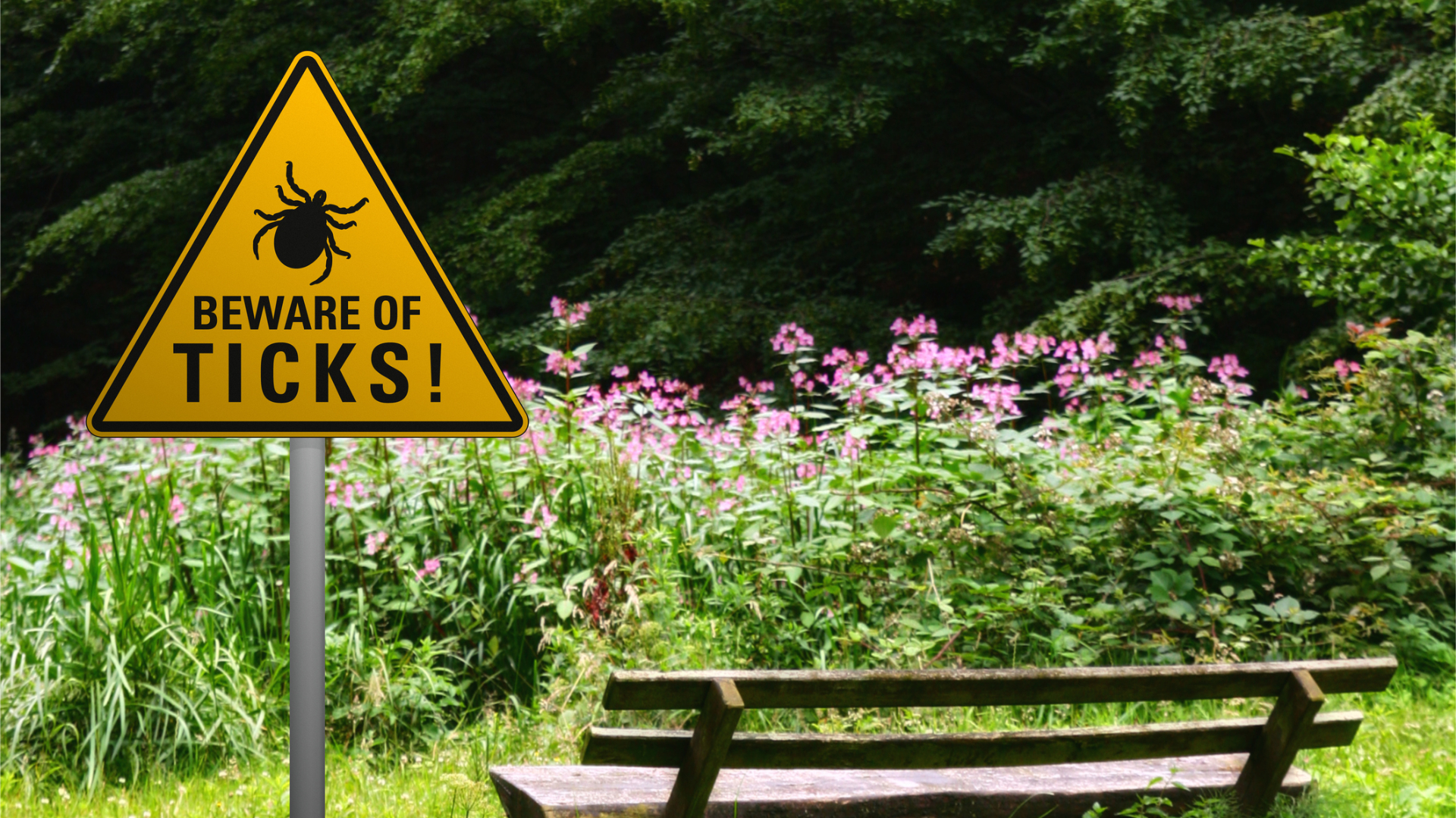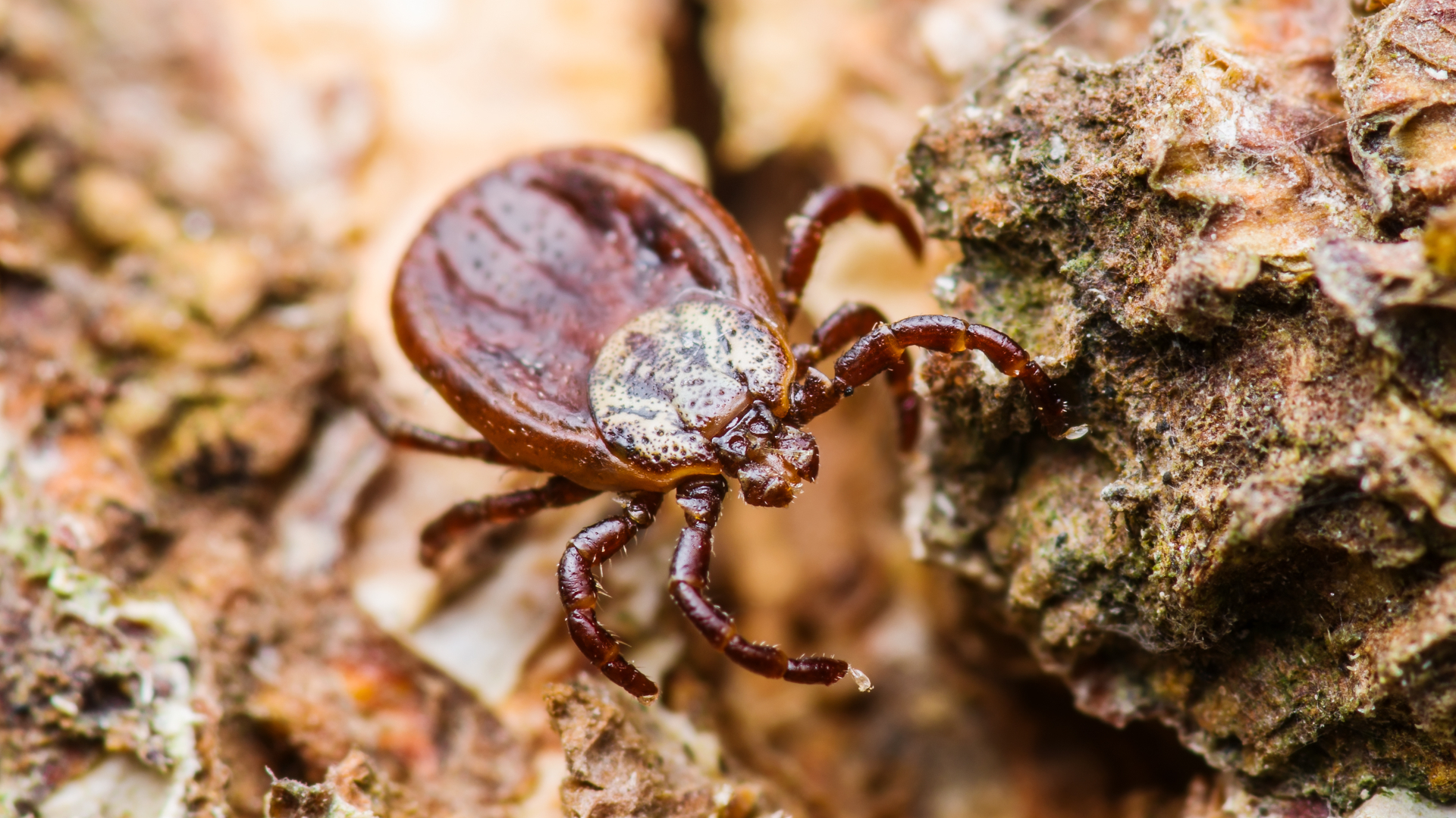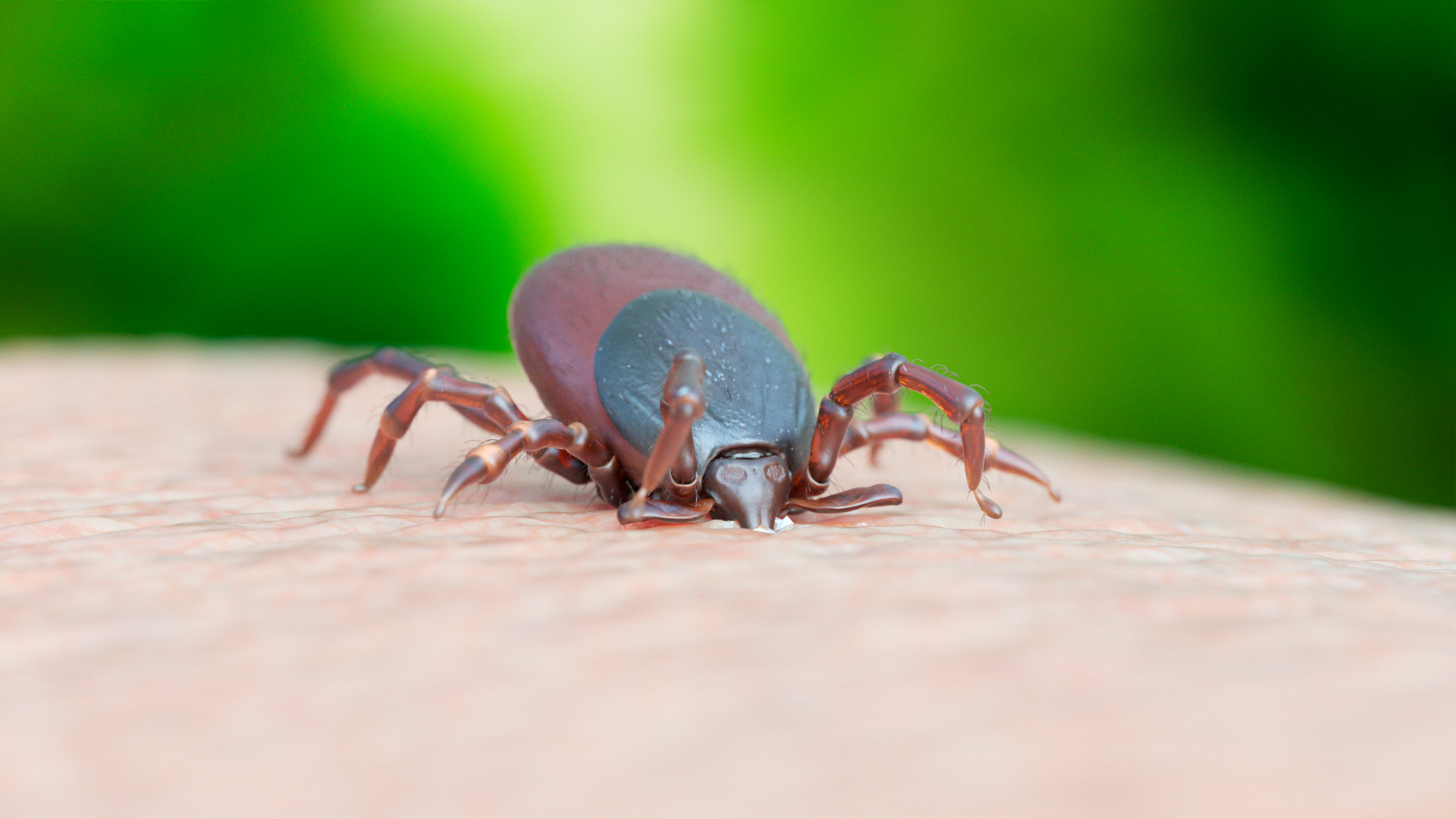How to avoid tick bites and what to do if you find one of these nasty arachnids hitching a ride
Knowing how to avoid tick bites is important – especially in summer – as these tiny vampire arachnids pose a potential health risk if left untreated

Knowing how to avoid tick bites is important, especially during the summer months. If you spend any amount of time enjoying activities in the wilderness – hiking, biking, kayaking, wild swimming, climbing, camping – you are going to encounter wildlife. For most of us, hanging out with the non-human locals adds massively to the joy of being outdoors. However, some of these locals might like you rather more than you like them. Especially the ones that are after your blood.
Most people will have encountered mosquitoes and midges, which are excruciatingly annoying and can present a significant danger to health in areas where diseases such as malaria, yellow fever, dengue fever and West Nile virus are prevalent. As irritating as they are, however, mosquitoes don’t tend to freak people out quite as much as some other bloodsucking parasites, such as leeches and ticks. Sometimes it doesn't matter if you've got the best insect repellent in town, the ticks can still find you.

Ticks scare people, perhaps, because they are arachnids, and all things with eight legs seem to have the ability to terrify – often completely needlessly. Most ticks bites are not, in fact, going to cause you any more discomfort beyond some localized and temporary itchiness.
Unfortunately, however, sometimes people get bitten by a tick that is carrying a disease, such as Lyme disease or Rocky Mountain spotted fever, and that can have more serious consequences – so it’s best to avoid them if you can, and treat a bite properly when it occurs. Here's how to avoid tick bites.
How to avoid tick bites: what is a tick?
As mentioned, ticks are not insects, they are arachnids, so – like their close cousins spiders (and scorpions and mites, all the popular species) – they have eight legs. When they’re young, ticks are known as nymphs, but they’re less innocuous than that makes them sound, because baby ticks can spread serious diseases just as effectively as adults. (In fact, they can be more dangerous, because they’re harder to spot.)
There are numerous types of tick, and each sub species has a range of colloquial names that vary according to where you are in the world. Ixodes scapularis, for example – the main culprit for infecting people with Lyme disease where it occurs, across the eastern and northern Midwest of the United States, and in southeastern Canada – is known to its enemies by various names, including blacklegged tick, bear tick and deer tick. Wood ticks and dog ticks, found across much of North America, are known for spreading Rocky Mountain spotted fever.
In Australia there are 75 kinds of ticks, the most unpleasant of which is the aptly named paralysis tick, and in Britain there are 20 varieties of tick, which can all potentially impart various ailments no body wants, including Lyme disease.
All the latest inspiration, tips and guides to help you plan your next Advnture!
All ticks start off small – nymphs are like poppy seeds, while adults have bodies about the size of a grain of rice – but they can grow considerably when they’ve had a good feed. And herein lies the problem, because they dine exclusively on the blood of other animals – including deer, dogs, mice, me and you – if we venture into their domain. Which, if you enjoy pulling on your hiking shoes and trail running shoes, or grabbing your mountain bike or going off on a camping trip, you almost certainly do.
If you are bitten, it can be useful to clock which variety of tick is responsible, but it’s even better to know how to avoid tick bites in the first place, how to deal with them when they happen, and what to look for afterwards in terms of warning signs that you may have contracted something more serious than an itchy bump.

When are ticks active?
Different types of ticks pose a danger at different times of year, and according to where on the planet you are getting out and about, but typically you need to be most vigilant from spring though summer and into the fall.
Here’s a fun fact though: I discovered my first tick of the year, burrowing into the back of my knee, after going for a trail run – at the end of a pretty mild January in southern England. This does seem horribly early, and it might be yet another thing to thank climate change for, but the point is, it’s worth checking yourself (and your dog) over for most of the year. If it’s not below freezing, ticks can be active.

How to avoid getting bitten by ticks
There is always the option of avoiding places where ticks hang out, but unfortunately they are often present in the places we all like to play in – woodlands, forests, fields, grasslands, moor, riverbanks – and we don’t think for a moment you should stop exploring such wonderful wild environments. It does help, though, if you stick to trails, instead of bush bashing your way through free-growing flora (you should avoid doing this from a Leave no Trace point of view anyway), where ticks can drop onto you easily.
Wearing long-sleeved base layers and mid layers, long pants, long hiking socks (tucked into your long pants for that really cool look) and running tights can all help reduce the risk of a tick latching onto you, but this won’t eliminate the possibility altogether, and sometimes it’s just not practical or comfortable to wrap yourself right up, especially in the height of summer. When camping, it can be a good idea to wear lighter colors, as ticks show up on these clothes better, and you can catch them before they get on your skin.
You can also spray yourself and your clothes with insect repellant that includes an active ingredient like DEET. This will help dissuade ticks from choosing you as a host, but it’s not a suit of armor, and if you’re running or walking in the heat, you will sweat it off fairly quickly. Always be careful when using chemicals and read the label carefully.
The best defence is vigilance – check yourself (and your nearest and dearest, if they’re out with you) over carefully when you’re hiking, biking, canoodling or camping in an area where ticks might be present. Give yourself – and your children and pets – a check each day if you’re camping, and when you get home from whatever outdoor adventure you’ve been enjoying. Wash the clothes you’ve been wearing too.
How do you know if you have been bitten?
Ticks attack with ninja-like stealth. They’re not noisy, like mosquitoes, and you won’t yelp in pain when they bite, as you do when an ant takes a piece of you. They hang out on blades of grass or in trees, and then when you brush past they will hitch a lift, find a nice warm bit of skin where the blood is close to surface, and chow down. Sometimes they even drop from trees.
It’s unlikely you will feel a tiny tick moving across your body, or notice when they bite. But it won’t be a smash and grab job, ticks get their head right into the opening they create and stay at the table for some time (sometimes several days), feeding away on your blood. The first thing you might notice is an itch. If you take a look at place where this is happening and notice a dark spot, look closer – it’s probably a tick.
Even if you don’t experience any itching, it’s worth giving yourself (and your kids and animals) a careful check after spending any time in an area where ticks are present. The quicker you deal with a tick, the less likely it is to infect you with Lyme disease or anything else.
That said, don’t panic and simply tear the tick off, because this can result in parts of the tick remaining in your skin, which are then hard to remove and can become infected.

How to remove a tick
If you spot a tick feeding on you, stay calm and do not just try and brush or pull it off – you want to extract it whole, to avoid infection later. The best approach is to use a pair or tweezers or a tick-removal tool (cheap, widely available, and an essential addition to any wilderness first aid kit) to firmly grab the tick as close as possible to the skin. Once you have done this, pull it upwards, slowly and carefully, without crushing it altogether, until it comes away.
Dispose of the tick, and then clean the bite area with an antiseptic if you have one, or soap and water if not. Don’t forget to then look for other ticks elsewhere on your body.
What to do after you have been bitten
Once you have safely removed a tick, or if you think you have been bitten by one but the animal has already had its fill and dropped off, there’s no point worrying too much about it. There’s nothing you can do about it at this stage, and the vast majority of tick bites simply leave behind an itchy lump – just keep an eye out for symptoms of something more serious later, and then act accordingly.
Remember – most tick bites are harmless. It’s only if ticks are infected with the bacteria that cause illnesses such as Lyme disease that you are in danger, but of course there’s no way of knowing whether the creature that has bitten you is carrying such bacteria.
Again, vigilance is your best form of defense here; be alert to the indicators that you might have been infected, and seek medical assistance as soon as you can, because the earlier you treat something like Lyme disease, the easier it is to get rid of it.
Symptoms to look out for are rashes, especially a circular red skin rash around the bite area, which is often described as being shaped like a target, or bull’s eye on a dartboard. Most of these rashes appear within the first four weeks after a bite and might last for a few weeks, but they can present several months later – or they might never appear at all.
Some people also get flu-like symptoms – including a high temperature, feverishness, headaches, fatigue, and muscle and joint pain, but others don’t get any signs at all, before falling ill. If you do experience any of the above symptoms, you should visit a doctor straight away.
The most common disease spread by ticks is Lyme disease, a bacterial infection that is diagnosed via a blood test. This illness can cause fatigue, tiredness and aching, potentially for a long period of time, but it can usually be treated with a course of antibiotics – the earlier you get treatment, the better.
Several other illnesses can be caused by ticks, depending on where you are in the world. The symptoms and severity of these diseases vary, although rashes are a common denominator.
Fear of ticks should not stop you from enjoying activities in the outdoors. You can take steps to reduce the risk of getting bitten, and to discover ticks before they’ve had a chance to transmit anything nasty, and even if those measures fail, the vast majority of tick bites result in nothing more than mild irritation. Far worse things can happen to you in the street.

Author of Caving, Canyoning, Coasteering…, a recently released book about all kinds of outdoor adventures around Britain, Pat has spent 20 years pursuing stories involving boots, bikes, boats, beers and bruises. En route he’s canoed Canada’s Yukon River, climbed Mont Blanc and Kilimanjaro, skied and mountain biked through the Norwegian Alps, run an ultra across the roof of Mauritius, and set short-lived records for trail-running Australia’s highest peaks and New Zealand’s Great Walks. He’s authored walking guides to Devon and Dorset, and once wrote a whole book about Toilets for Lonely Planet. Follow Pat’s escapades on Strava here and Instagram here.
